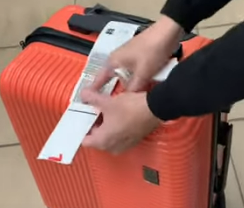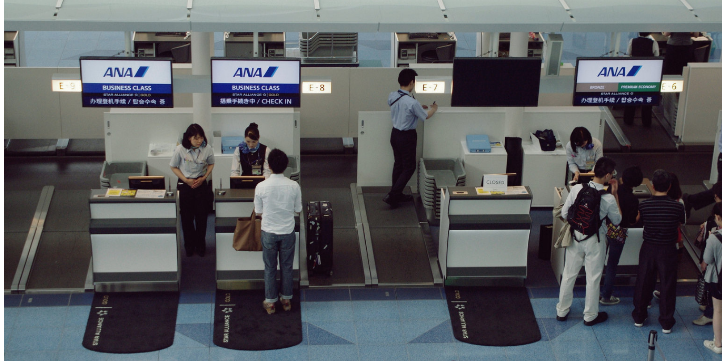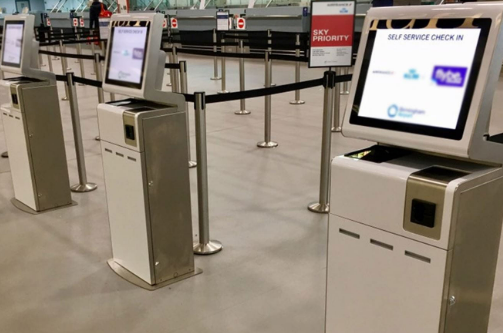As an Amazon Associate, I earn a small commission from qualifying purchases. Learn more about this.
If you’ve ever traveled by air, you know that the whole process can be quite hectic.
From rushing to the airport to navigating through the crowd, everything can be overwhelming, particularly if it’s your first time or if you’re not used to the rush.
How to Drop Off Luggage at Airport
Many people may find this intimidating, especially if they’re not frequent flyers.
However, once you understand the process, it can be quite simple.
Make Proper Preparation
Before even setting foot at the airport, the first thing you want to do is to check your airline’s baggage policy.
Every airline has its unique set of rules regarding luggage size, weight, and the number of allowed pieces.
This information is usually available on the airline’s official website.
For instance, for an airline like Emirates, things like prohibited items for luggages and laptop policy can be found online.
Don’t overlook this step because it can save you from a lot of stress and unexpected additional charges.
Once you’ve done your homework, pack accordingly.
Ensure that your luggage adheres to the guidelines, especially the weight limits.
It’s advisable to invest in a portable luggage scale, which allows you to pre-check your luggage weight before reaching the airport.
This way, you’ll avoid the unpleasant surprise of having overweight luggage and having to unpack in the middle of the airport.
Related: Can Someone else Pickup my Luggage at the Airport?
Your Luggage Should Be Tagged
When you arrive at the airport, follow the signage to the airline check-in area or the baggage drop-off point.
Depending on your airline and whether you have checked in online, you may be able to use a self-service kiosk or a staffed counter for baggage drop-off.
If you’re using a self-service kiosk, you’ll need to scan your boarding pass or enter your booking reference to initiate the process.
After that, the machine will print out a baggage tag, which you’ll have to attach to your luggage. If you’re at a staffed counter, a member of the airline staff will do this for you.

Don’t forget to keep the baggage receipt.
It’s often attached to your boarding pass, and it’s proof that you’ve dropped off your luggage. In case your luggage goes missing, this receipt will be instrumental when dealing with the airline.
Be Timely
You also want to arrive at the airport early.
Airlines have strict cut-off times for baggage drop-offs, usually around 45 minutes to an hour before the flight for domestic flights and 2-3 hours for international ones.
Arriving early allows ample time to go through this process without feeling rushed.
This is also applies to when picking your luggage off the airport. You need to be timely.
Where to Check Your Luggage At The Airport?
After you’ve packed your bags and arrived at the airport, the next step in your journey is to check your luggage.
Upon entering the airport, look for the large departure boards. These electronic screens display all the information you need, such as flight number, airline, and check-in desk number.
Some airports also have interactive kiosks or maps that can help you easily go through the whole thing.
Don’t worry, airports are designed to be user-friendly, and signage is often clear and plentiful.
Now, there are two main ways to check your luggage at the airport: at the airline check-in counter or at a self-service kiosk (if your airline provides this option).
The location for both will be clearly marked.
Let’s start with the airline check-in counter, the more traditional way.

Here, you’ll be greeted by an airline representative.
Make sure to have your ID and flight confirmation details handy because they’ll need these to check you in for your flight.
They’ll weigh your bags to ensure they’re within the airline’s weight limits, tag them, and then send them off to the airplane.
They’ll also give you a boarding pass if you haven’t already checked in online.
On the other hand, the self-service kiosks offer a faster and more efficient way to check your luggage.

Here, you’ll need to scan your passport or enter your booking details to initiate the process.
The machine will then prompt you to place your bag on the scale and attach the printed tag to your luggage.
Once that’s done, you’ll take your bag to a nearby baggage drop-off point.
It’s often a conveyor belt or a dedicated counter, depending on the airport.
Either way, once you’ve dropped off your bags, keep hold of the receipt.
This piece of paper is your proof that the airline has your luggage, and it has a unique tracking number in case your luggage gets misplaced.
There’s one more thing to mention: timing.
While the process I’ve described might sound straightforward, it can take a bit of time.
You have to account for potential queues, especially during peak travel times.
That’s why it’s a good idea to arrive early – you’ll have more than enough time to check your luggage without feeling rushed.
Related: What Happens to Luggage After check in?
Conclusion
Dropping off your luggage at the airport doesn’t need to be an arduous task. With a clear understanding of the process and a bit of advance preparation, you can ensure a smooth start to your journey







